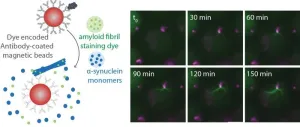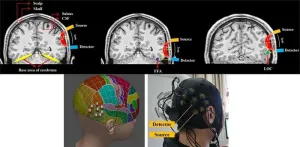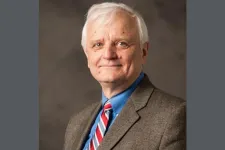Novel Test Holds Promise for Detecting Parkinson’s Disease Early
Investigators from Brigham and Women’s Hospital and the Wyss Institute are working together to develop a new approach to detect and quantify minute amounts of a biomarker of Parkinson’s disease and related disorders at early stages
The platform has the potential to create early applicable molecular diagnostics, improve clinical trials, and facilitate drug screening
(Boston) — In the development of Parkinson’s disease (PD), the changes that will lead to neurodegeneration take place in the brain long before patients show any symptoms. But without a test that can detect these changes, it’s difficult to intervene early to more effectively slow disease progression.
To address this need, researchers from the Brigham and Women’s Hospital, a founding member of Mass General Brigham, and Wyss Institute for Biologically Inspired Engineering at Harvard University have developed a molecular assay platform that they successfully applied to patient samples to detect and quantify single ⍺-synuclein fibrils, the pathogenic aggregates of ⍺-synuclein that are a hallmark of PD and other neurodegenerative disorders collectively known as ⍺-synucleinopathies. Their results are published in PNAS.
“This work is an important step toward our goal to develop a method to detect and quantify a key marker of Parkinson’s disease to help clinicians identify patients much earlier, and thus keep PD and related neurodegenerative disorders much more effectively at bay,” said corresponding author David Walt, Ph.D., of the Department of Pathology at the Brigham and a core faculty member at the Wyss Institute. “Having a biomarker that we can quantify could help us identify new drug candidates, and test their effects in more targeted patient cohorts at early stages of the diseases.”
Worldwide, more than 10 million people are suffering from PD, whose incidence increases with age in societies where average life expectancies have also been increasing in recent decades. In the U.S. alone, nearly 90,000 people are diagnosed with PD each year. To date, doctors must rely on neurological examination and patients’ medical histories when diagnosing PD. However, by the time clinical symptoms appear, the disease has already wreaked irreversible damage in the brain. Currently, there are no blood or laboratory tests to diagnose PD in patients lacking a known genetic predisposition, which account for about 90% of patients with PD.
PD together with multiple system atrophy (MSA) and dementia with Lewy bodies—two disorders with similarly dismal outcomes—belongs to a group of neurological disorders that have in common the pathological aggregation of the ⍺-synuclein protein into toxic fibrils. Those fibrils disrupt multiple neurological functions and ultimately cause neuronal cells to die. The neurological symptoms displayed by patients with these so-called ⍺-synucleinopathies strongly overlap, which makes it impossible to distinguish them in order to start patients on currently available therapies that are specific for each of the disorders. Importantly, none of those available therapies treats the root causes of the diseases, and they only temporarily suppress patients’ symptoms.
On the project, Walt’s team collaborated with the lab of Vikram Khurana, M.D., Ph.D., at Brigham and Women’s Hospital, which provided samples from PD and MSA patients, and that of physicist David Weitz, Ph.D., at the Wyss Institute and the Harvard John A. Paulson School of Engineering and Applied Sciences (SEAS), which, through vital contributions from graduate student Rohan Thakur, added their expertise for the encapsulation of single ⍺-synuclein fibrils. The researchers engineered so-called “digital seed amplification assays” (digital SAAs) that they used to detect single ⍺-synuclein fibrils in samples of brain tissue and fluid.
Using mini-compartments and immunocapture strategies, the researchers developed different diagnostic assays to detect ⍺-synuclein fibrils in patient samples. In the dSAAs, individual fibrils are separated into different types of engineered microcompartments, and then, as seeds, grown into larger fluorescent aggregates that become easily detectible and countable.
“Our digital SAAs present a critical technological advance with the potential to turn pathological ⍺-synuclein into an early biomarker for this class of neurodegenerative diseases,” said co-first author Tal Gilboa, Ph.D., a postdoctoral research fellow in the Walt lab. “But work remains to be done. Our current strategies worked well on brain tissue samples from PD and MSA patients, but there’s room to improve their sensitivities so that we can meet the criteria for clinical diagnostic testing, and, hopefully, detect ⍺-synuclein fibrils in blood and other biological fluids.”
In addition to continuing to optimize the assays for diagnostic applications that, in the future, could distinguish between different ⍺-synuclein fibril structures that form in patients suffering from PD, MSA, and dementia with Lewy bodies, Walt’s team is also exploring the platforms’ potential for drug screening. They showed that the potential of a small molecule inhibitor of ⍺-synuclein aggregation can be accurately quantified using digital SAA and that the assay can read out different fibril morphologies.
“Applying the assays as a drug discovery tool could facilitate the search for promising drug candidates that more efficiently inhibit fibril formation, or even help us identify new drug targets that enable or stimulate ⍺-synuclein aggregation in the body,” said the other co-first author Zoe Swank, Ph.D., a postdoctoral research fellow in the Walt lab. “Using this system flexibly could help us better understand how we can constrain aggregate growth.”
Additional authors include Russell A. Gould, Kean Hean Ooi, Maia Norman, Elizabeth A. Flynn, Brendan Deveney, Anqi Chen, Ella Borberg, Anastasia Kuzkina, and Alain Ndayisaba. This research was supported by a grant from the Michael J. Fox Foundation (under grant# 2021A011886). Tal Gilboa is an awardee of the Weizmann Institute of Science Women's Postdoctoral Career Development Award.
PRESS CONTACT
Wyss Institute for Biologically Inspired Engineering at Harvard University, Benjamin Boettner, benjamin.boettner@wyss.harvard.edu
Brigham and Women’s Hospital, Haley Bridger, hbridger@mgb.org
###
The Wyss Institute for Biologically Inspired Engineering at Harvard University is a research and development engine for disruptive innovation powered by biologically-inspired engineering with visionary people at its heart. Our mission is to transform healthcare and the environment by developing ground-breaking technologies that emulate the way Nature builds and accelerate their translation into commercial products through the formation of startups and corporate partnerships to bring about positive near-term impact in the world. We accomplish this by breaking down the traditional silos of academia and barriers with industry, enabling our world-leading faculty to collaborate creatively across our focus areas of diagnostics, therapeutics, medtech, and sustainability. Our consortium partners encompass the leading academic institutions and hospitals in the Boston area and throughout the world, including Harvard’s Schools of Medicine, Engineering, Arts & Sciences, and Design, Beth Israel Deaconess Medical Center, Brigham and Women’s Hospital, Boston Children’s Hospital, Dana–Farber Cancer Institute, Massachusetts General Hospital, the University of Massachusetts Medical School, Spaulding Rehabilitation Hospital, Boston University, Tufts University, Charité – Universitätsmedizin Berlin, University of Zürich, and Massachusetts Institute of Technology.
Brigham and Women’s Hospital is a founding member of Mass General Brigham and a teaching affiliate of Harvard Medical School. With nearly 1,000 inpatient beds, approximately 50,000 inpatient stays, and over 2.6 million outpatient encounters annually, clinicians across the Brigham provide compassionate, high-quality care in virtually every medical and surgical specialty to patients locally, regionally, nationally and around the world. An international leader in basic, clinical, and translational research, Brigham and Women’s Hospital has nearly 5,000 scientists, including physician-investigators, renowned biomedical researchers and faculty supported by nearly $750 million in funding. The Brigham’s medical preeminence and service to the community dates to 1832, with the opening of the Boston Lying In, one of the nation's first maternity hospitals designed to care for women unable to afford in-home medical care. Its merger with the Free Hospital for Women resulted in the Boston Hospital for Women in 1966. In 1980, the Boston Hospital for Women, the Peter Bent Brigham Hospital and the Robert Breck Brigham Hospital officially merged to become Brigham and Women’s Hospital. With nearly 21,000 employees across the Brigham family – including the Brigham and Women’s Physicians Organization and Brigham and Women’s Faulkner Hospital – that rich history is the foundation for our commitment to providing superb care for some of the most complex cases, pursuing breakthroughs in biomedical research, training the next generation of health care providers, and serving the local and global community.
END








